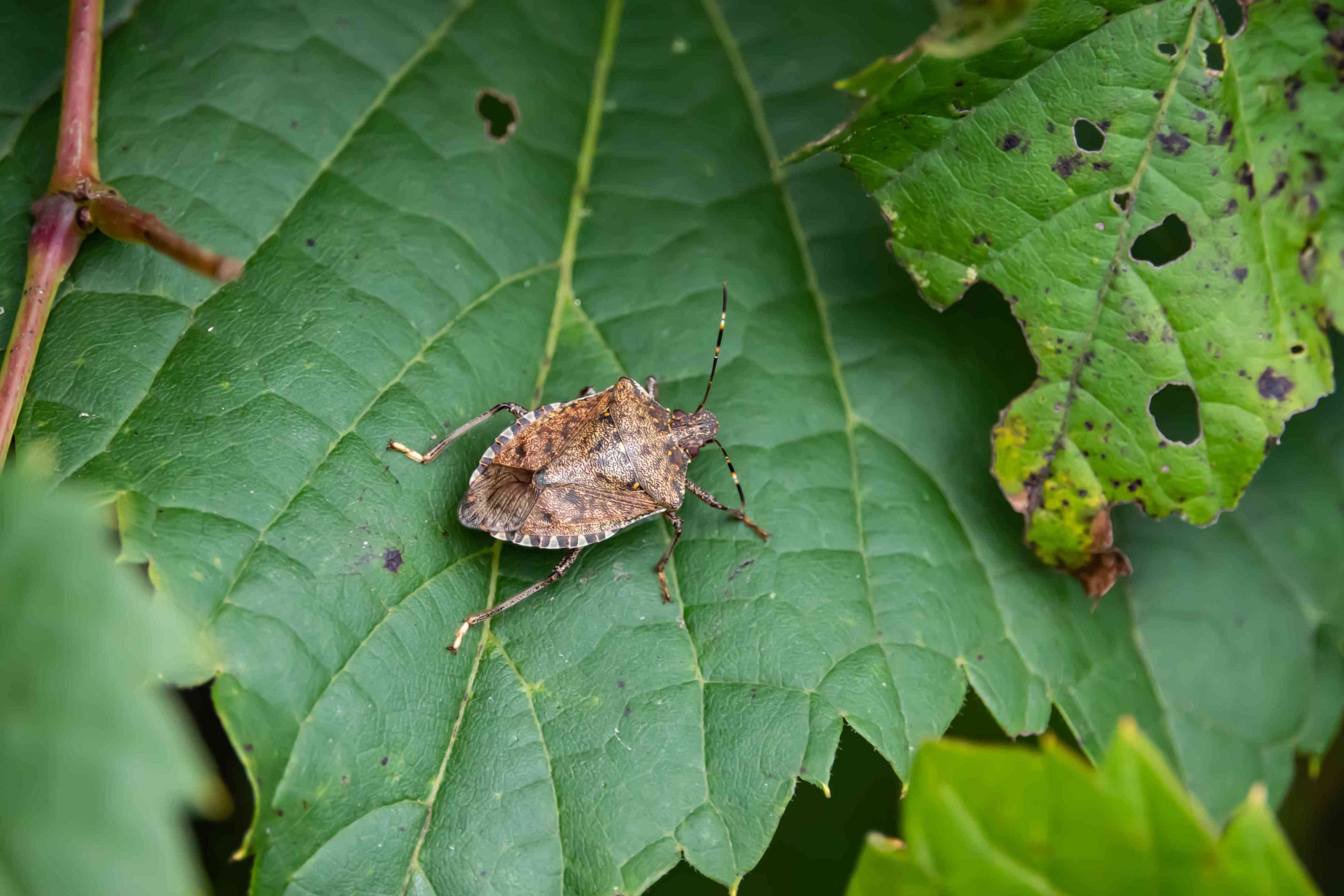Understanding the Brown Marmorated Stink Bug
The brown marmorated stink bug, scientifically known as Halyomorpha halys, might have a peculiar name, but it’s far from amusing for those who encounter them. These pests are a significant concern for both commercial growers and home gardeners, especially in regions with high infestations. According to Jim Walgenbach, PhD, a professor and extension entomology specialist at North Carolina State University, all life stages of these bugs can damage plants, including foliage and fruit.
Stink bugs feed on a wide variety of plants, both edible and ornamental. Their preferred targets include peaches, apples, pears, pecans, tomatoes, peppers, and sweet corn. This invasive species is particularly problematic because it lacks natural predators, making it challenging to control. First detected in eastern Pennsylvania in the 1990s, they are now well established in the Mid-Atlantic, Mid-South, and Appalachia regions, though they are less common in states like Florida, Mississippi, Louisiana, Arkansas, and Texas.
Why Are They Called Stink Bugs?
The name “stink bug” is well-earned. When disturbed, these insects release a pungent odor from glands in their abdomens as a defense mechanism. While this smell is not toxic or harmful to people or pets, it can be strong and linger for hours. Described as smelling like almonds or cilantro, the scent serves as a deterrent to potential predators.
Do Stink Bugs Bite?
One of the good news points about stink bugs is that they cannot bite or sting. They do not cause structural damage or spread diseases. However, their primary threat lies in their impact on crops. For most homeowners, they are more of a nuisance than a serious problem, according to Walgenbach.
What Attracts Stink Bugs?
Stink bugs are drawn to warmth and light, especially as temperatures drop. You may find them in your home during fall or winter, seeking dry, cozy places to overwinter. They often hide under tree bark or within human structures such as attics, walls, crawlspaces, sheds, or even grills. If they find a suitable location, they will secrete a chemical odor to attract others.
Outdoors, they are attracted to weeds, produce, plants that produce nectar or sap, and trash containing these items. Additionally, they are drawn to the pheromones emitted by other stink bugs.
How to Eliminate Stink Bugs in the Garden
A multi-pronged approach is recommended for managing stink bugs in the garden. Start by looking for clusters of light green eggs, often laid in a triangular shape on the undersides of leaves, and crush them. Neem oil sprays can help suppress nymph stages, though they may not eliminate them entirely.
Hand-picking adults and submerging them in soapy water is another option, although they tend to drop off when disturbed, making them difficult to capture. For severe infestations, organic botanical insecticides like Pyganic can be used, but Walgenbach warns that these products are broad-spectrum and may harm beneficial insects as well.
Other methods, such as traps, have proven ineffective so far.
Managing Stink Bugs Indoors
If you find a few stink bugs indoors, there are several ways to handle them without causing harm. One method is to use a piece of tissue to gently grab them and flush them down the toilet. Alternatively, a vacuum can be used to suck them up, and the contents should be disposed of in the trash.
DIY traps can also be effective. Place a jar or pan filled halfway with soapy water under a light. Stink bugs will be attracted to the light and fall into the solution. Another option is to fill a cup with soapy water and hold it under the bug, which will fall into the solution and be trapped.
Preventing Future Infestations
To keep stink bugs away, focus on prevention. Repair damaged screens, seal gaps around windows and doors with caulking or weather stripping, and check for entry points where cables, plumbing, and electrical lines enter the building. Keep your garden free of weeds that attract stink bugs, and eliminate food sources indoors by wiping down counters and using covered trash cans.
Avoid opening windows without screens, and consider dimming outdoor lights that might attract stink bugs. Using yellow bulbs instead of white ones can reduce attraction. Sprinkle diatomaceous earth near entry points to create a barrier that dehydrates any bugs that cross it.
Frequently Asked Questions
What scents repel stink bugs?
Stink bugs dislike scents like citrus, garlic, clove, and mint. Using essential oils with these scents can help repel them.
How long is stink bug season?
Stink bugs are active from March through September. They may reappear during warm weather, so you might see them again in an unusually warm fall or winter.
What kills stink bugs on contact?
A 50-50 mixture of water and dish soap or insecticidal soap can kill them immediately. An equal mixture of water and vinegar will also work.







